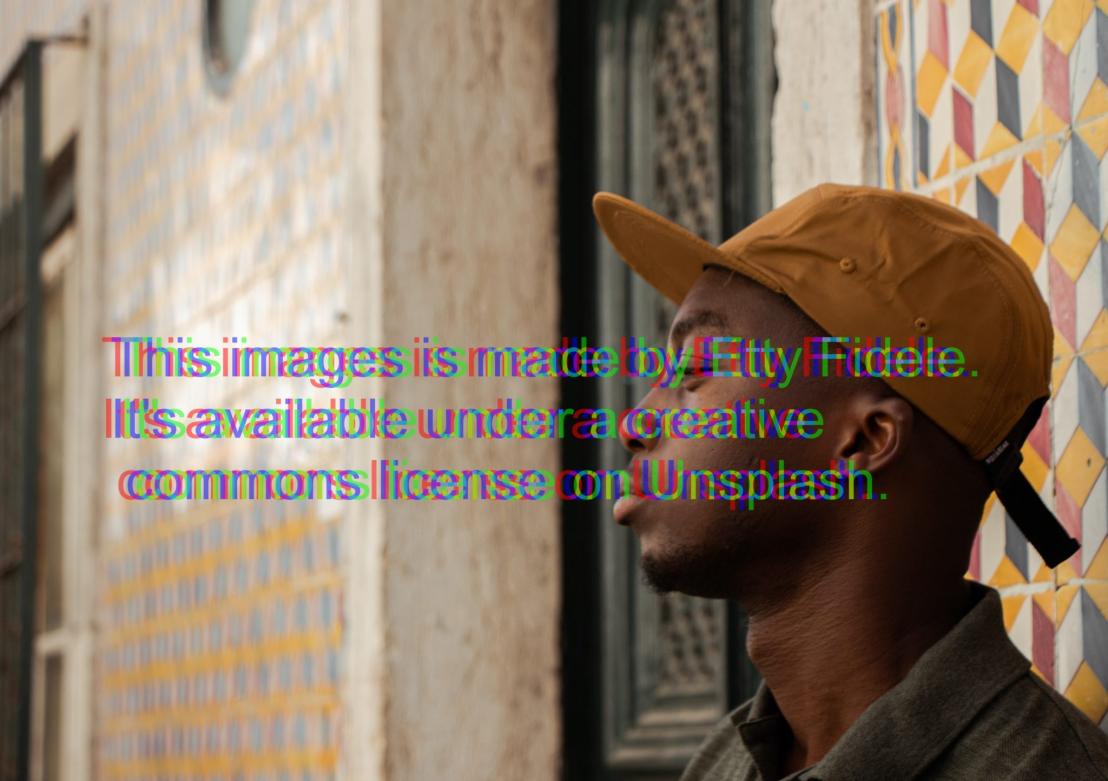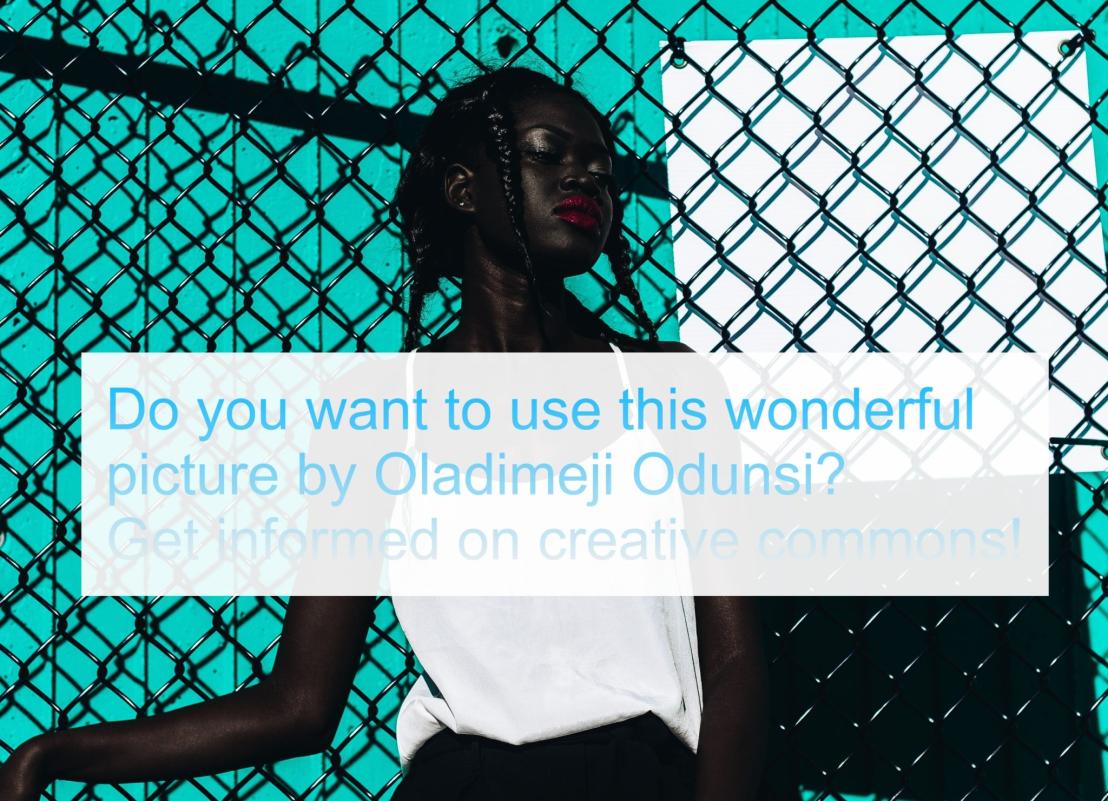Visual language is key to community engagement. Images convey messages beyond words and are extremely helpful to interact with low or illiterate audiences. That’s why they have such an important role in Communication for Development (C4D).

Picture by Etty Fidele, on Unsplash
When looking for the perfect illustration for your product or publication, the Internet is a great resource. But not everything you find online is free to use or is of the right quality.
The quality of images applies both to content, format, and use. Understanding why quality matters, how and where to find it, is essential for project design.
In this article, we’ll explain what we mean by quality, how you can judge the quality of an image, and where you’ll be able to find what you need. We’ve also published a list of our favorite image banks in the tools section.
Why does quality matter?
Before answering that question, we should define what we mean by quality. When we speak about “images” we refer to illustrations, symbols, vector images, icons, drawings and pictures. We say an image is “good” when it responds to four criteria: cultural adaptation, relevance, technical quality and copyright.
When illustrating a community meeting in a rural area of The Gambia, a picture of European office workers wouldn’t be considered “adapted”. Accurate representation of people is important to increase empowerment. If you fail to represent your audience members accurately and meaningfully through the images you use, you might be contributing to harmful stereotypes and narratives.
Underrepresentation of black images in online image banks (and mainstream media) is a problem that many have recognized and started to address. It’s our role to promote initiatives that enhance diversity and promote the presence of Africans both in front of and behind the lens of a camera.
Images can only enhance the impact of your tool if they contribute to the message. In order to create a meaningful impact, aesthetics and content should go hand in hand. For example, adding a purely decorative, cute picture of smiling children on a brochure on Human Trafficking might not contribute to the impact of your message.
Technical quality, as the third criterion, reflects your position as a professional. Your audience deserves nicely presented content (even if you think they don’t care). Your efforts in crafting messages and tools deserve the same quality standards when it comes to the images that go with them. Taking pride in packaging can only benefit the way people will judge the content.
Finally, when it comes to copyright, our advice is clear: using someone else’s work without permission is not legal. It also reflects a lack of respect towards photographers, illustrators, painters, and graphic designers when one uses their work without paying for it.
If you are starting to feel like it’s too complicated, there’s no need to worry. In the next sections, we’ll explain each step in the process of getting the quality images you deserve!

How to judge the quality of an image?
Now that you’ve learned the four key ingredients of a good image, let’s look at the checklist below while screening your next image search result.
Imagine, you Googled the topic of your next campaign and found a beautiful picture that you’d love to use. How to check whether it’s good? Ask yourself the following easy questions:
1. Is it culturally adapted?
Do the people in the picture look like the people you will be engaging with? Are they wearing the same clothes, do they use the same objects, and do they show common behaviours?
The setting of the picture is also important: does this look like the place where your audience lives? Could this picture be taken in your region of work?
If the people in the picture or the place where it’s taken feel unfamiliar to your audience, they might feel that the messages of your campaign apply to the people in the picture, but not to them.
In the worst-case scenario, culturally insensitive images might be perceived as offensive when they reflect a practice that’s not accepted within the community.
In April 2020, the RCCE* working group on COVID-19 in West and Central Africa decided to create its own library of community engagement tools. The website contains visuals, video, and audio produced in West and Central Africa. Its goal is to enhance engagement and acceptance of preventive measures among local audiences, by using content created specifically for them.
2. Is it relevant to what I’m trying to say?
Some images strike us with their beautiful composition or colours. We can’t resist the beauty and we’re eager to promote their author by using them on our next tool. But does the image reflect what our tool is trying to say?
Visual language can be complex and it’s often difficult to translate a complete theory into one image. Yet, you should try to find the image that translates your message as clear as possible. If it’s not available yet, you might consider making your own, with the help of a (local) illustrator or graphic designer.
The possibilities are endless if you decide to create new visuals. But informed online searches can also bring lots of solutions – on any size of budget. In the next section, we’ll explain where to look online.
3. Is it technically sound?
There are several things to look out for when downloading images. Pixelization is a common pitfall. Your image looked great when zoomed out, but after enlarging became blurry. To avoid this, you should only download and use images that are of high resolution.
Watermarks on pictures are another common trick. Image banks often protect their products by applying a filter to them. The mark hides the original content of the image, which you can only access by buying it.
The technical capacities of the creator also play a significant role. Be selective when hiring consultants for visual production. Make sure that the results of his or her work live up to professional standards. Don’t know what those are? Try comparing them to the visuals on this website, which is completely designed in West Africa.
4. Do you own the right to use it?
“Right click + Save as” is not a legal procedure. Not every picture you find online was published there with the consent of the author or the people inside it.
To make sure you can rightfully reproduce an image through your work, take it from one of the channels described below. Avoid just downloading anything from the internet. Chances are that it will turn out against you (and your project).
Copyrights are a complex matter but with some help from us (and our next article) you’ll become an expert in no time.
A golden rule is to always add the name of the author to a picture or illustration. If you don’t know who that is, you probably shouldn’t use it.
Where to find good images?
The internet is a place of happiness and Google Search is a great place to find inspiration. Yet, to download and publish images, it might be better to check established channels.
Here are three safe ways to find your next pearl.

1. Check out the IOM Media Library
The IOM Media Library is a great place for pictures taken by IOM staff and professional photographers. Create your own account here and start your search. IOM owns the copyright to all images on the website, and each image gives instructions on how to quote the author.
If you have great pictures of your own, don’t forget to submit them for publication.
2. Try online image banks
Image banks are private or public collections of pictures, illustrations, symbols or other visuals available for download. For some you must pay, others are free. With paying services, you often get the choice between a single download, buying packages or a time-bound subscription.
Some image banks are worth the investment. Here’s an overview of our favorites (including those offering images free of charge). Paying to download pictures can be a good middle ground between hiring someone for tailor-made images and downloading free images (of lower quality).
Creative commons are a type of license where artists choose to share (part of) their work for free, often in exchange for visibility. Social motivations also contribute to artists’ decisions to share their work: to promote diversity (see cultural representation above) or to make the world simply more beautiful.
When looking for images online, you can avoid wasting time by entering precise search terms. Think in advance about what you need (unless you want to spend a lot of time finding inspiration through random scrolling).
3. Hire a creative
If what you’re looking for is not available (online), consider the possibility of creating fresh content. By contributing to the collection of images from the region, you’ll help us all in our next search.
Look for some artist websites or Instagram accounts like African Digital Art for inspiration and contacts. When hiring a graphic designer for the layout of your next report, you might also ask for a series of illustrations you often need but lack.
Tips & Tricks
Here are some final tips in your search for good quality images:
- When downloading an image, check whether you have the right file type (JPEG, PNG…)
- If you hire a freelancer, ask if he or she can provide you with a couple of editable source files that you can use to recreate images in the future
- Look for local initiatives: in many countries in the region, young creatives have started their own image banks to fill the lack of locally created visuals
- If you hire an illustrator, photographer or designer to provide you with new content, think about sharing the results! Regional offices or Headquarters often manage online libraries that can be used all over the organization.
- Add the name of the author even if the image is royalty free – it’s a form of appreciation
- If you use more than one image in your publication, make sure they look good together by finding similar styles and colors
- Consent is just as important as copyright! Always try to figure out if the author of a picture has asked the consent of the people in it before you share it
Finally …
… finding the right image isn’t as hard as it seems. Always make sure to check cultural adaptation, relevance, technical quality and copyright, and 90% of the job is done. The remaining percentage is your own personal touch.
This article focused on 2D images, but most of the above also applies to video, 3D images, and even GIFs. If you’re curious about our favourite places to get spectacular images, read our article on image banks. And if you liked this content, please share on social media!



